
Some school years we have classes that are chattier than average. Although notably more exhausting, I always find these years to be the most enjoyable because chatty students are more willing to share their ideas and display their curiosity.
An important role for teachers is to help these more social students understand the balance between appropriate times to chat socially, and times to chat academically so they can maximize their learning each day. Here are a few strategies that work well in my classroom to foster an appropriately conversational environment.
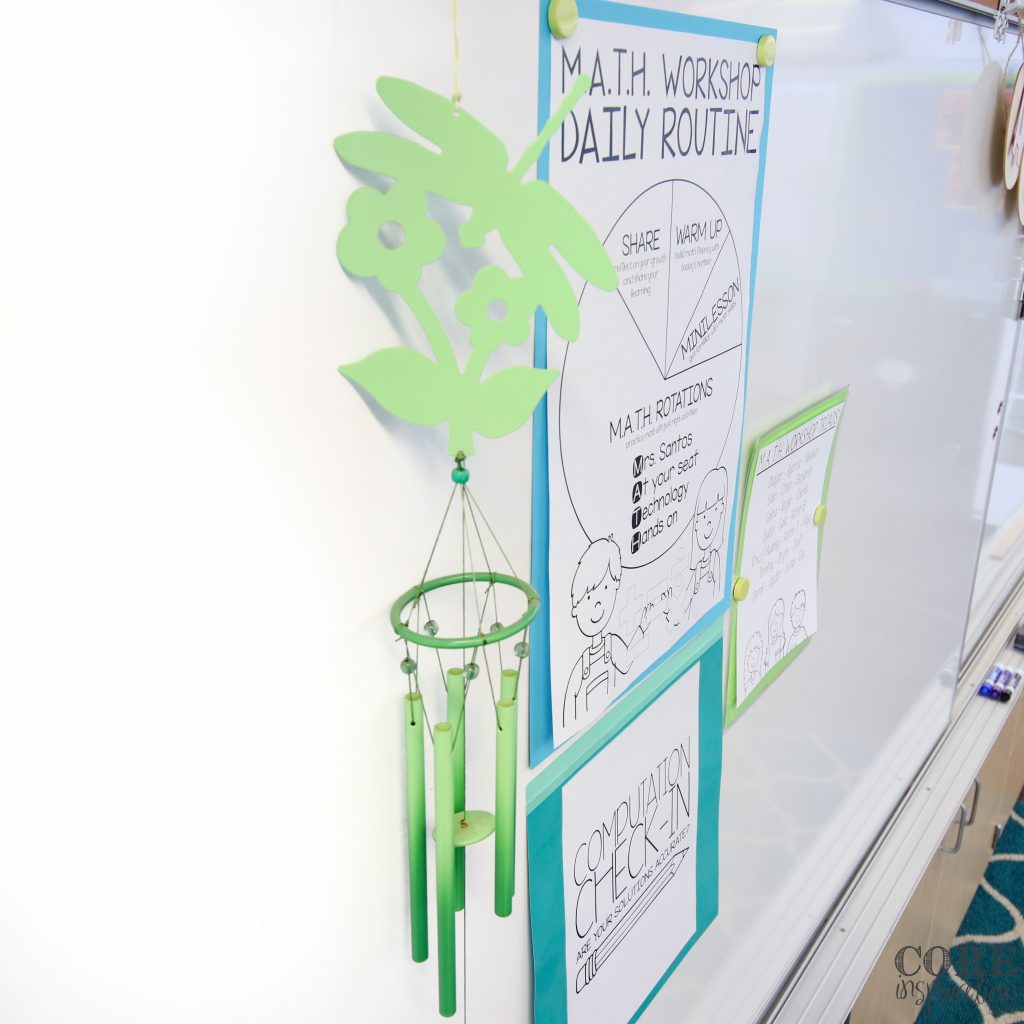
One of the most powerful ways to reduce chatting or excess noise in your classroom is to use something other than your own voice to calm the noise. When you use your voice, you are modeling the opposite of what you’d like to have happen; you are adding to the noise produced by vocals. Instead, try using chimes.
Using a calm wind chime is a peaceful way to call students to attention when they are working on activities that require talking and collaboration. The room inevitably gets noisy during activities like these, and student conversations sometimes wander away from the academic topic. If you notice this noise level escalating, or sense students need redirection or instruction, ring the wind chime.
Suggested expectations for responding to wind chimes:
Hand chimes like these are another calm way to help students adjust their voice level in a nonverbal way. The vibrations that resonate between the two bars of the chime are an instant attention getter, and have a seemingly magical ability to calm the noise in an active room.
Suggested Expectations for responding to hand chime:
Many students, especially in younger grades need to be taught about different voice levels so they can learn to self-monitor. Often your loudest talkers have never been taught the difference between how it sounds and feels to use different voice volumes. A simple lesson can make a notable impact.
The four volumes I use in my classroom are:
I introduce these level through this simple lesson which can be easily revisited throughout the school year. To begin, I have my students gently place their open hand over their throat. As they hold their hand over their throat, I tell to use their normal voice to say “this is my normal voice”.
When asked what they notice, students will share how they feel their throat “moving” or “vibrating”. We learn these vibrations are created by their vocal cords. This energy travels through the tissue and skin to our fingertips so we can “feel” our voice.
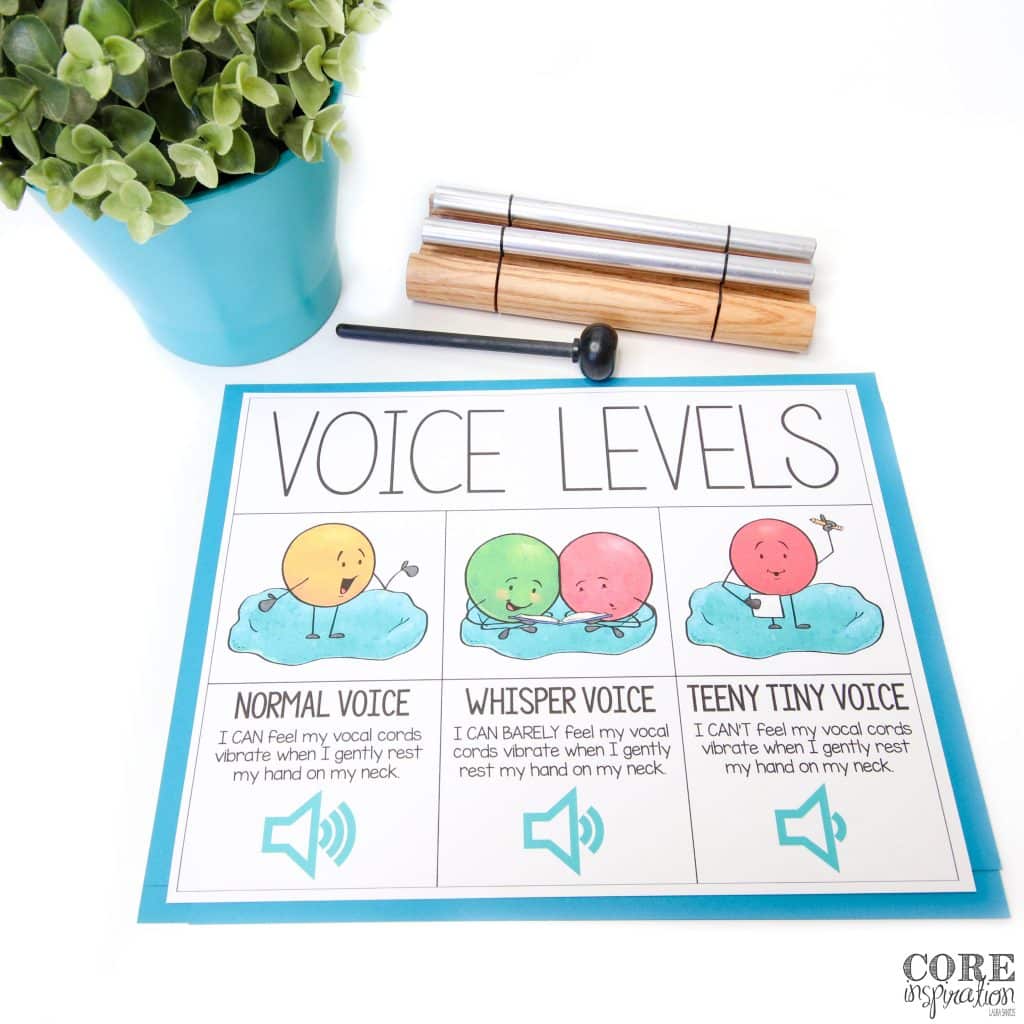
We then repeat the exercise using a calm whisper voice. Students notice the vibrations are more gentle. Finally, I ask demonstrate a teeny tiny voice – one that creates no vocal cord vibrations.
This hands-on lesson helps students build an understanding of how it feels and sounds when each of these varying voice levels are used. As the year progresses, students inevitably need reminders, so we quickly repeat this activity as needed.
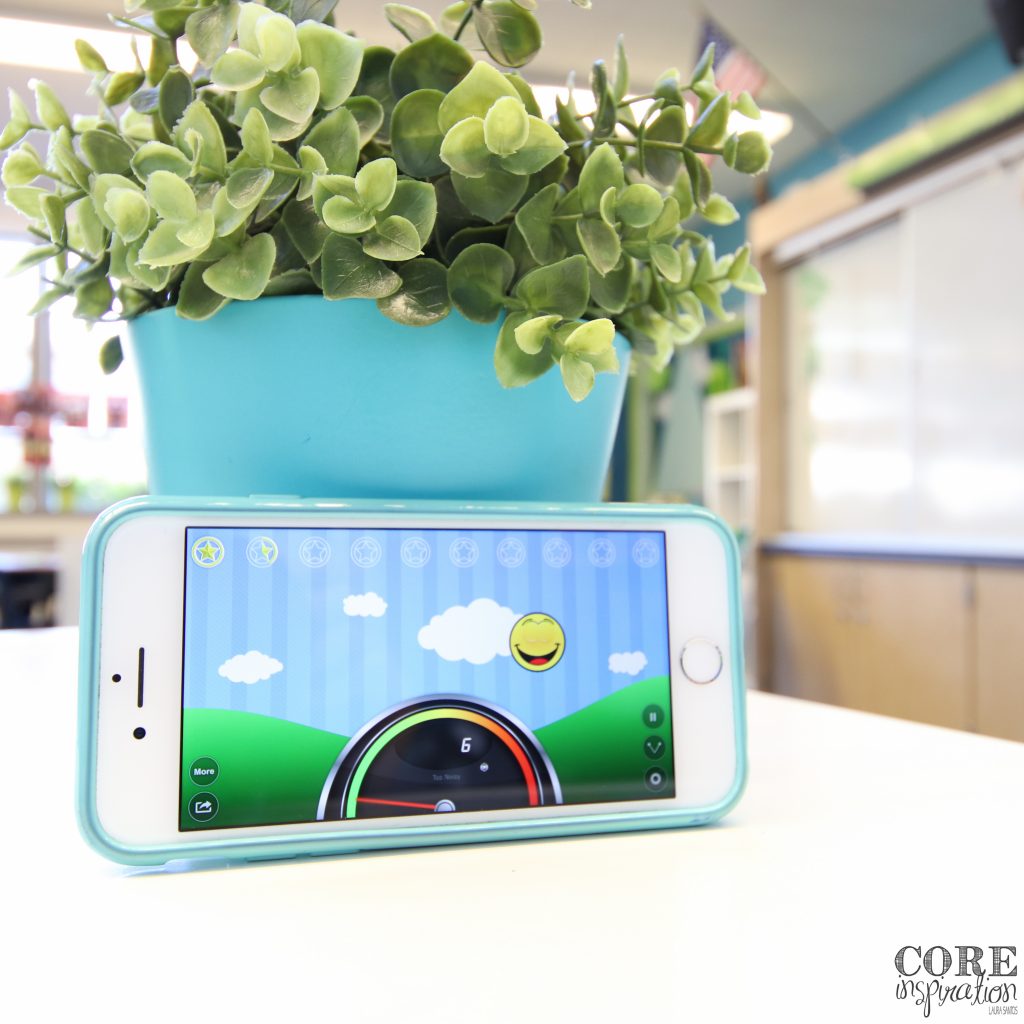
If you notice your students are still having trouble monitoring their voice level after the lesson described above, give the app Too Noisy a try. This app uses the microphone on your phone or iPad to monitor the noise level in the area. As the volume in the room gets louder, the needle on the meter moves, giving students a visual reminder to calm their voices. The app awards stars for extended quiet work times and removes stars when the room gets too noisy.
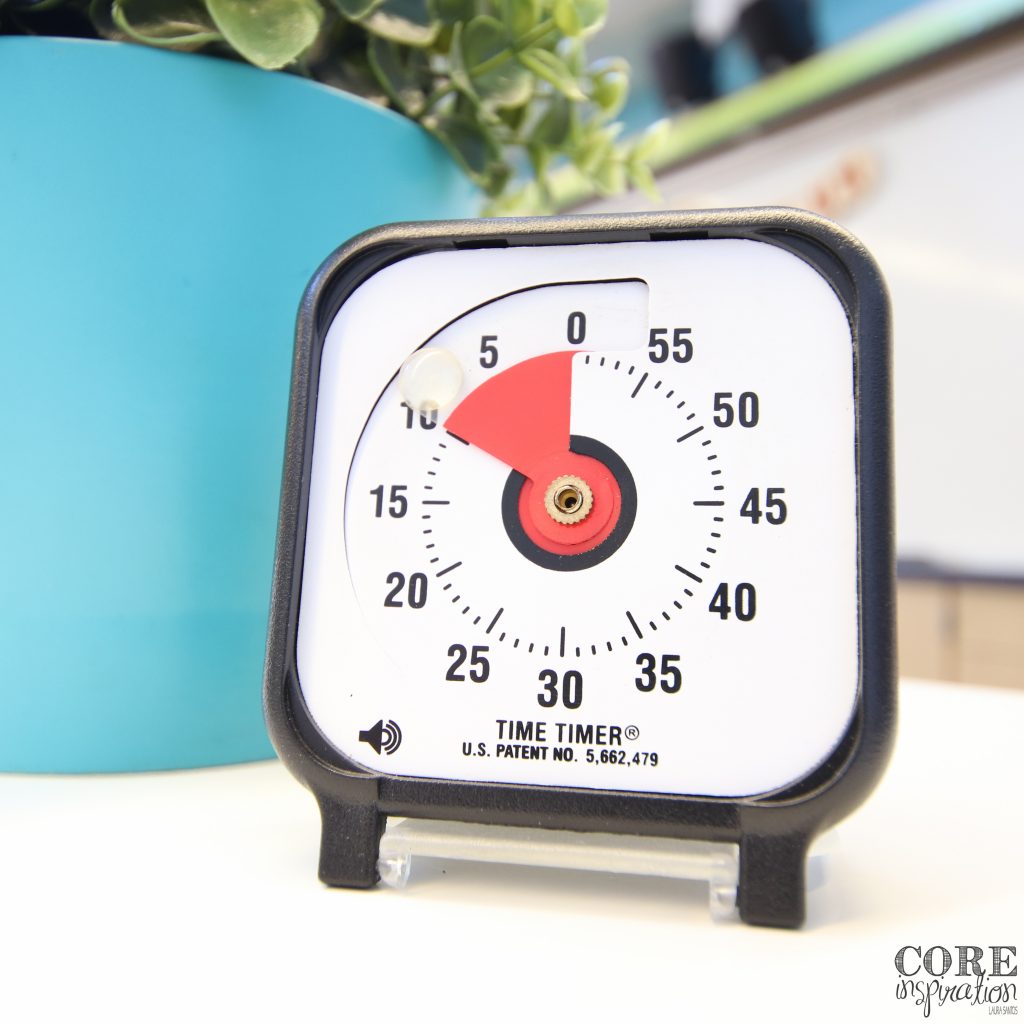
There are some days when students need a little break from talking all together. This is when a silent challenge comes in handy. Rather than using silence as a punishment, you can frame it as a fun game and a reward for the mind. The premise of a silent challenge is simple. If students focus silently, they get to enjoy a reward activity.
Begin by introducing the silent challenge and how long it will last. Make sure it is a duration you know for certain your students will successfully be capable of staying silent. Once students achieve their first goal, they often want to try for longer, and are highly self-motivated.
Once you’ve set a time goal, introduce the fun reward students can engage in if they successfully meet this goal. Perhaps they will get to participate in an extra brain break, have some time to socialize after they tidy up at the end of the day, run an extra lap around the field, or add extra time to their favorite part of the schedule.
When your students know the goal and the reward, set the timer and let the challenge begin. If students reach their goal, ask if they want to try for longer. If students do not reach their goal, come together as a class to talk about what you all can do to reach the goal, then try again.
Typically, I use the silent challenge as a last resort because a silent classroom is one where learning is being limited, but there are certainly days and moments in any classroom where we need to reset.
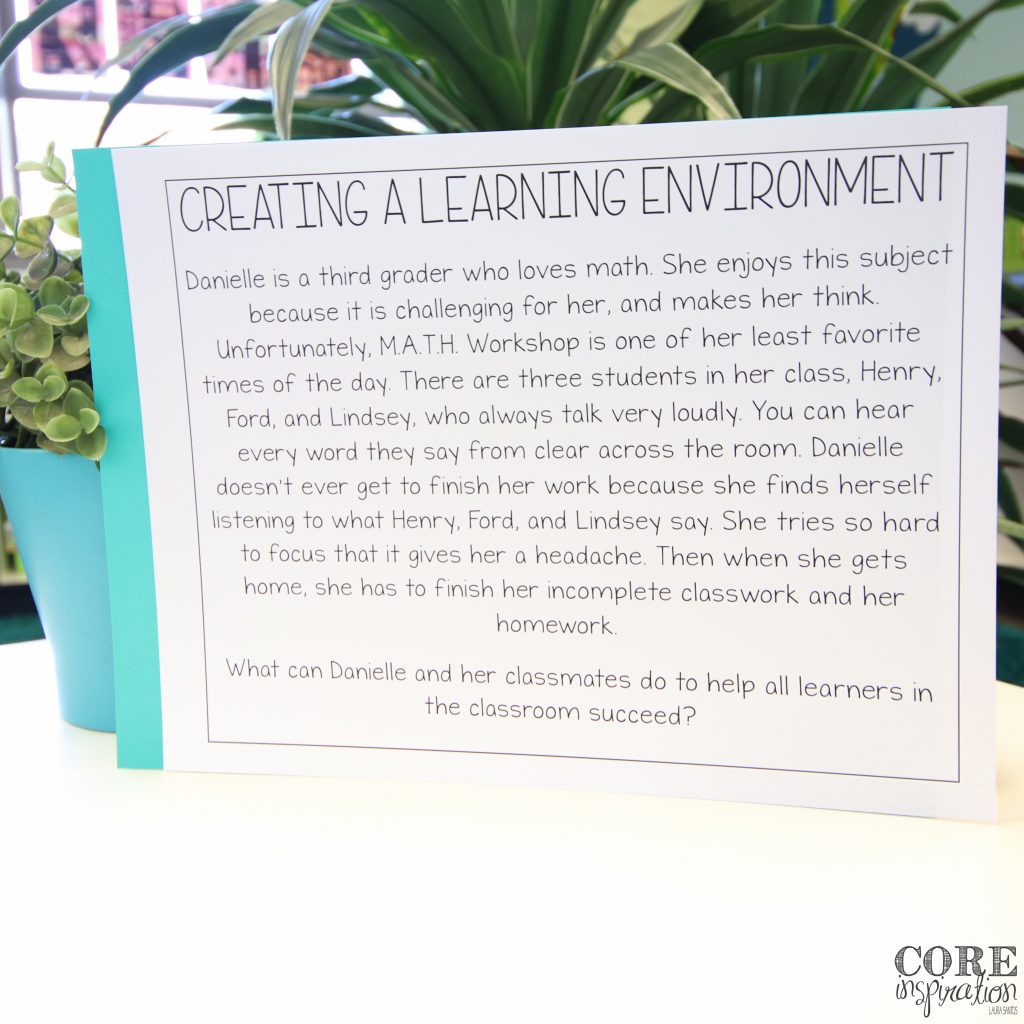
Having conversations about the different needs of learners is a powerful way to help students build empathy and truly understand the importance creating a calm, productive learning environment. Students love taking care of their peers, and are more willing to monitor their voice level when they know it will benefit other students in the room.
During morning meeting, you can talk through different scenarios like the one below to help students build empathy for their classmates in relation to using calm voices.
Do you have any additional ideas for calming a chatty class? Share your favorite tip in the comments below so we can all learn from one another. I look forward to reading your tips!

I’ve been an elementary teacher for ten years, and love sharing tips and resources that make differentiated learning more manageable for you. Thank you for visiting.
Learn More
Dropping by with weekly tips, classroom strategies, and free content created with you in mind.
Join me and other 2nd through 4th grade educators in the Teaching with Core Inspiration Facebook Group. This is a place to collaborate, ask questions, and learn how teachers like you are using Core Inspiration resources in their classrooms. Hope to see you there!
© 2024 Core Inspiration ∙ Website by KristenDoyle.co
12 Responses
What type of reward do you use for the Silence challenge?
Hi Gayla,
I usually have my class pick a GoNoodle brain break to participate in.
Laura
How do they pick a GoNoodle brain break? It’s hard for me because many different choices among the students.
Hi Jamie,
I have a GoNoodle Coordinator as one of my class jobs. The coordinator is responsible for picking the brain breaks for the week and does not take input from peers…quick and quiet. 🙂
Warmly,
Laura
Do you have anymore scenarios for creating empathy?
Hi Jessica,
I have made a few others, but don’t have them all in one document or anything organized. 🙂 I usually type them up into my morning message document based on areas of need I notice as each year progresses.
Warmly,
Laura
Hi Jessica,
Yes, I split our forty minute rotation portion into two twenty minute rotations. I always prefer to have a flexible meet with the teacher rotation that allows me to observe, confer with students and pull small groups on an as needed basis. This allows my students to get “at their seat” work done consistently and allows me to meet the needs of more students. I hope this helps.
Warmly,
Laura
Thank you for this! I was looking for something different! After sifting for hours, I found it! I appreciate this blog, and feel it is one of the best articles on a chatty class that I have read so far!
Thank you for taking the time to share your gratitude. 🙂
Warmly,
Laura
I would love more details on how the brain break coordinator does their job. Is there a chunk of time set aside for them to do this? How do they record what they have chosen, how many do they get to choose, etc. I would love to know what is tried and true for you.
Hi Carrie, thank you for reaching out. When I first started Brain Break Coordinator, I have the students create a little 5×3 grid and plan their brain breaks for the week on Monday morning. Now, I just have them pick on the fly…they set a timer for 30 seconds and quickly make their selection. If they are unable to make the selection efficiently, they get one “warning” and then lose their job the second time it happens. I find the system I am using currently is more efficient than the original planner system. 🙂
Warmly,
Laura
Hi Laura! Class becomes chatty immediately after the lesson is complete in most cases. Methods described by you are quite interesting and applicable. Many a times i see teachers getting irritated or even shouting when the chat become noisy and uncontrollable. 🙂 Thanks for sharing these workable tips.